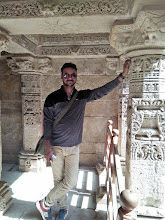Procurement is the process of finding desired goods or
services with agreed terms and
conditions with free consent of both the parties, from an external source/supplier through some tendering
or bidding process. The process of agreement or contract must be done in
accordance to the guidelines of .Indian Contract Act , 1872.
The
5R’s of Procurement:
Procurement process is not only to find and buy things from
outside source, it’s far beyond than this. This can be defined in terms of 5R’s.
These all 5R’s are the most important factors in the field
of procurement which, in turn, helps any organization to reach to its ultimate
goal, “To Make Money”.
Objective
of Procurement:
The principal objective of Procurement function can be
summarized as to arrange materials, supplies of services of right Quality, at
right Quantity, from right source, at right Time and right Price. As already discussed, these 5 “Rights”
have meaning and significance far beyond their dictionary meanings.
To state more broadly, the main objectives of this functions
are:
·
Maintaining continuity in respect of
Supply of materials to support the production and the company’s operation.
·
Doing all the above with the minimum
investment consistently with safety & economic advantage. This, achieved by
firstly, complete buying which involves a great sensitivity to the force of
supply & availability regulate the price & availability of the
materials, and secondly, by controlling investment on inventory.
- ·
Avoiding duplication , waste and
obsolescence with respect to materials.
- ·
Maintaining standards in quality of
materials, based on suitability for use.
- ·
Developing good and reliable
suppliers and ensuring satisfactory vendor relationship.
- ·
Procuring materials at optimum cost
with consistent quality .
- ·
Maintaining company’s competitive position by
controlling costs of materials and thereby, maximizing profits.
To state in another way, to obtain best service and greater value for money
spent should be the goal of procurement function.
Types
of procurement (Centralized and De-centralized):
When a company is small or located in a single location, all
the purchasing/procurement activities are concentrated at one place.
However, when the company grows, and has perhaps, two or
three factories under it, then the problem may arise as to whether the
purchasing function should be centralized in one place or it should be decentralized ,
say among the division or branches or factories.
There are advantages & disadvantages for both the
systems and companies take the decisions according to their suitability.
Some advantages of Centralized structure are:
Whether the Decentralized approach has some other benefits
like:
· Ability to respond faster to emergency conditions partly because of shorter line of communication.
· Direct responsibility, better liaison & tighter control.
Procurement
process cycle:
As in the case of every aspect of management, there cannot
be a standard method of organizing a purchase department or having a standard
set of system & procedures. Each
set-up has to be tailor-made to suit the specific requirement of that particular
organization, enterprise or institution..For example, a big hospital or a
government institution or an engineering company would all have different types
of organization for their respective purchase department and may follow altogether
different types of procedures. However there are some basic elements in the
purchase transaction which is common to all. In summary, these are as follows:







0 Comments
Please share your views in this comment section.